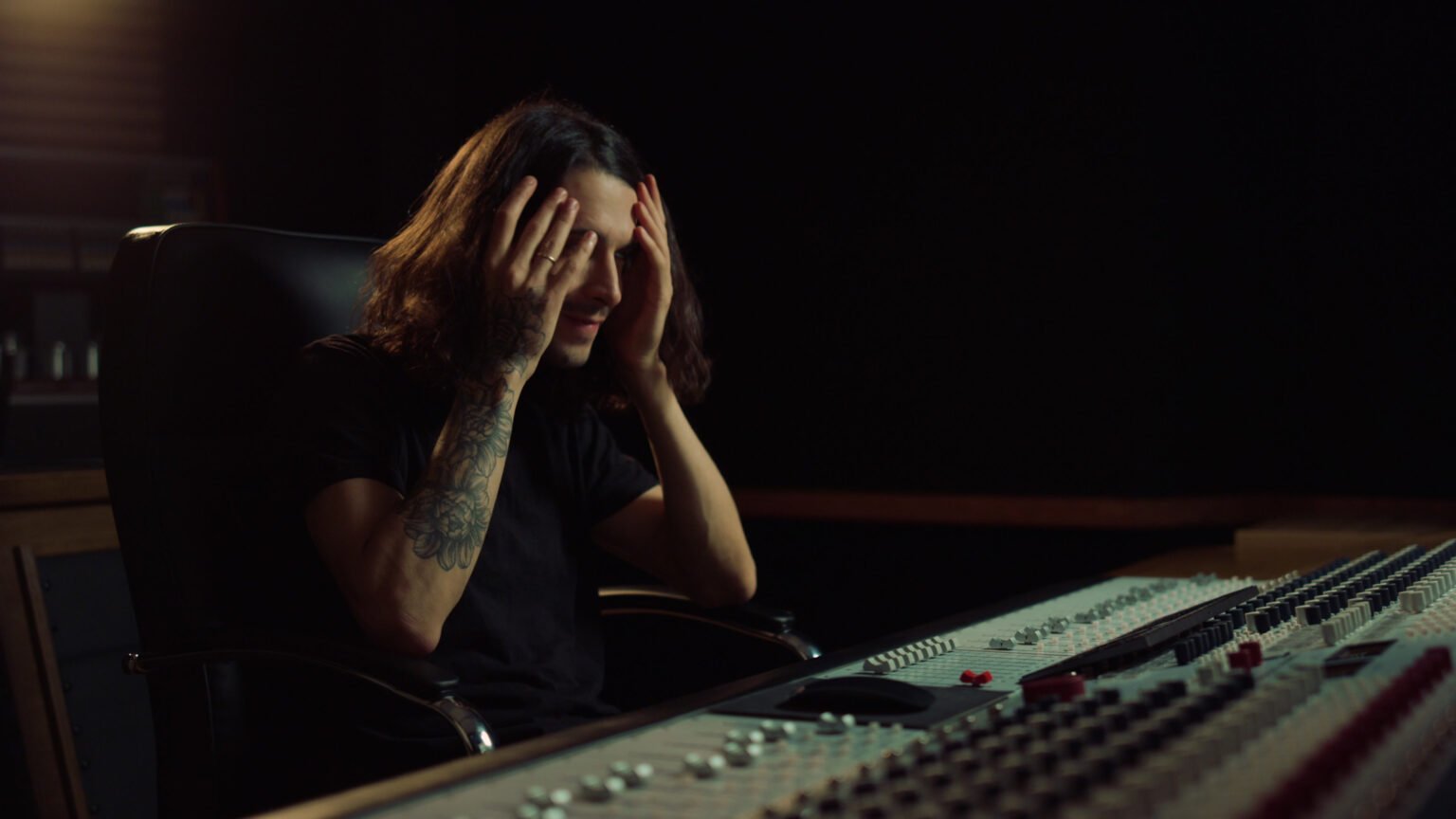News
8 Jul 2022
When things go pear shaped

Subscribe to CX E-News
by Andy Stewart
What do you do when the project you’re working on just refuses to come together?
Is there a way forward when the sonic image in your head remains steadfastly not what is coming through the speakers? On the flipside, what do you do if the mix sounds perfect to your ear, only to have it rejected by your client?
Welcome to the world of production and mixing. This is where the rubber meets the road.
There are two parts to this conversation: the first involving frustrations with your own work; the second involving the frustrations of others. Let’s get to it.
Sometimes we wrestle with a production or mix for far too long. Despite all our experience, creativity and best efforts, the harder we try to land it the more elusive and uncooperative the music becomes. If you haven’t felt this way at some point in your career, congratulations… you soon will.
Let’s look firstly at some of the causes of our own work frustrations and discuss ways to overcome them.
Fear and Loathing in The Studio
When your own work is the primary cause of frustration and your best creative decision making leads you not to mixing nirvana, but rather, a dead-end impasse, dragging yourself out of this self-inflicted mire can be exceedingly difficult.
When your best efforts produce nothing but a pile of inadequate mixes, your energy levels for a project invariably plummet to an all-time low. This, needless to say, is not the best time to be attempting to drag yourself off the canvas to find a sonic solution everyone’s happy with. Unfortunately, this is usually when your best effort is nevertheless required; when you’ve had a gut-full or you’re stumped for ideas.
Getting yourself re-energised and thinking clearly is therefore now your top priority to get things back on track.
You may be producing a piece of music this week where you’re one of the primary contributors of musical ideas (and perhaps one of the performers, too). In this situation you may be finding a song difficult to land because your arrangements and performances simply aren’t cutting it, despite your very best efforts. When you’re at this crossroad it’s time for a rethink; time to consider getting help from other musicians, or possibly taking a short break from the project. A fresh perspective, either through the ears of others, or by the passage of time, is probably the best medicine here.
You can’t always succeed by the sheer force of your own will. Sometimes it takes a short break, or the performances of other talented musicians to contribute the last missing puzzle pieces. As a producer, recognising when you’ve reached this juncture is an art unto itself that you need to develop a keen sensitivity towards.
Similarly, if you’re mixing a project for a client, and to your ears at least the mix just isn’t cutting the mustard, it’s time to take stock of where you’re at, keeping in mind that having reached this conclusion, you’re probably already low on fuel and need to act quickly. The trick here is to find inspiration in some aspect of the mix that’s cool and pursue that as a point of focus. We’re trying to draw a line in the sand here to make sure things don’t keep getting worse from this point on. Ask yourself (quickly) what it is that’s specifically wrong and look to right that problem with decisiveness and without distraction. Do not let your mind cascade into thinking there are twenty things wrong with the mix when there’s only one or two. That’s when you start to unravel all your good work and send the mix into a tailspin from which you may not recover.
The key here is to stay calm by focussing on the things that have the potential to spark your imagination back into life – primarily those things that you already know are great about the mix. Think clearly, act quickly, and work in short bursts. Work for an hour on a specific solution and then pull the pin. Remember, you’re low on fuel, you may not be thinking clearly or acting calmly, so short bursts are the answer here. Lots of fresh perspectives are what’s required now, not another 10-hour stretch that may produce little in the way of lasting results.
‘Save As’ and walk away. Don’t forget that digital mixing, which is likely how you’re working, is your good friend in this situation. Saving different versions of an idea in quick succession aids in the archiving of new balance options while helping you limit any unforeseen damage you might do to the mix along the way. Doing multiple saves also helps you avoid getting lost in the maze of your own process, digging the hole deeper as it were; another great way to deplete your energy levels. A quick word of warning though here: I would strongly advise against doing too many ‘Saves As’ at one sitting, lest you find yourself more confused the next day.
If you’re trying out specific ideas ‘Save As’ but be sure to label each and every session with very specific words that will plug you back into last night’s idea quickly and easily. Don’t just call them A, B and C, or you may find yourself even more confused when you reopen the sessions.
Finally, remember to work decisively, and if you catch yourself playing the track from the top over and over without specific intent, switch off and walk away. Repeated aimless playbacks only sap you of energy, running you down faster than a dodgy iPhone. Tomorrow’s fresh perspective, meanwhile, may change everything.
The Client, The Collaborator or The Self-Absorbed Agitator?
Now to the exceedingly complex world of working with others. Whether you call them clients, collaborators, friends, or names is entirely up to you, but whatever their title, these ‘others’ are inevitable, necessary and, in the main, crucial. Indeed, the art of being a great producer, recording or mix engineer hinges directly upon understanding the role these ‘others’ play alongside you in any successful production.
But like all relationships, it’s mainly when things go off the rails that musical relationships become the most challenging. There are myriad reasons why this happens of course, beyond any capacity I have here to list them.
Let’s consider a couple of pear-shaped scenarios and ways we might put the ship back upright.
In 2022, one of the most common causes of a project’s failure is when the clients are mostly off-site. Creating a piece of music with collaborators who are often (or sometimes entirely) absent from recording or mixing sessions is a sure-fire way to elevate the risks of things going awry. Ironically, this is now a typical working method, the significant limitations of which we all too often gloss over.
Particularly when it comes to producing, although the same applies to mixing, it’s not enough for a client to throw a few ideas at you over the phone, embellished with a couple of adjectives like ‘warm’ and ‘atmospheric’, and then expect you to fill in the musical blanks to their complete satisfaction. Even if they record their main performances with you in the studio, for you or your client to then expect the rest of an arrangement to simply fall into place as if by magic in their absence is naïve at best. Frankly, music almost never works like this. Musical possibilities are just too vast and the time taken to explore even a tiny percentage of them is far too lengthy (not to mention costly, or are you working for free again?). Wherever possible I would urge people to get back in the room together and make music in the best possible way; face-to-face.
The same logic applies to absentee mixing. Without the client sitting with you between the speakers, or even lounging behind you reading a book, things can easily go off track. Hours of your hard work can potentially disappear in a puff of smoke when the client finally hears your mix via Google Drive (or similar) and wants to ditch half the effects, most of the pitch correction and your choice of main guitar, which they most unhelpfully suggest during the inevitable follow-up phone call that “We didn’t plan on using!” These types of run-of- the-mill problems are easily averted with your client present.
So when things next go awry, ask yourself why. There’s every chance that some, if not all, of the problems you’re currently facing in the studio can be attributed to separation anxiety of the musical kind. Depending on your circumstances, maybe the time has finally come to encourage people back through the door.
Andy Stewart owns and operates The Mill studio in Victoria, a world-class production, mixing and mastering facility. He’s happy to respond to any pleas for pro audio help… contact him at: andy@themill.net.au or visit www.themillstudio.com.au
Subscribe
Published monthly since 1991, our famous AV industry magazine is free for download or pay for print. Subscribers also receive CX News, our free weekly email with the latest industry news and jobs.






